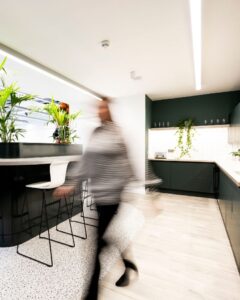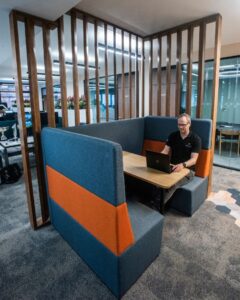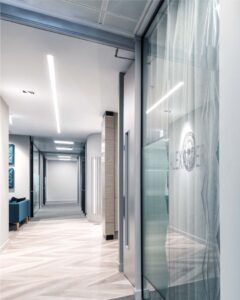Analog Devices
SPACE completed this CAT B fit-out for global tech giant Analog Devices covering 28,000 square feet of space across three floors of their new premises in Edinburgh.
- Year 2023
- Size 28,000 sqft
- Location Edinburgh
- Sector IT & Technology
- Services Design & Build
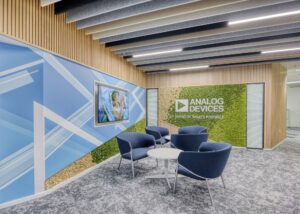
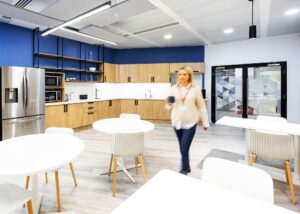
Overview
The move was driven by the desire to update their workplace to a more attractive, contemporary working environment aligned to their corporate standards. In addition to the internal fit-out at their new office, we also managed the dilapidation works at their previous location for successful handover back to the landlord.
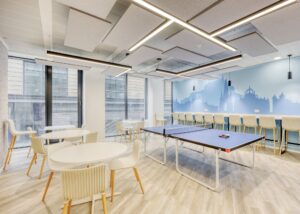
Approach
Needing to accommodate over 200 workstations as well as Research & Development laboratories, the space is functional and efficient, allowing comfortable settings for focused, private work as well as flexibility to move between desks, meeting rooms, and lab stations for collaboration. The challenge was in creating a space that incorporated all these elements and was aligned to brand guidelines but still had a uniqueness and freshness to give the Edinburgh office its own identity.
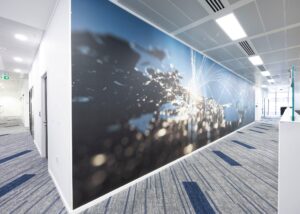
With the need for confidentiality in the day-to-day environment, the desking layout follows a more traditional working model, supported with a versatile breakout space and wellbeing zones. The look and feel of the space works in line with Analog Devices’ strong branding, using colours and materials to create a fresh and interesting workspace for all users. We employed heavy use of acoustic panelling to reduce sound reverberation, assigning colour schemes to rooms through coordinated carpet and wall panels allowing for each space to have a unique character in a cohesive design.
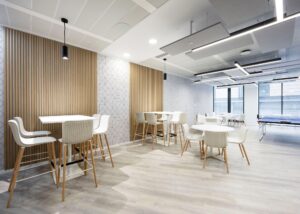
While the main workspaces are clean and sleek visually, we created contrast through our design in the reception and breakout spaces. Here we introduced diagonal walls, geometric lines, suspended acoustic ceiling panels, and a more diverse material palette. Coupled with a moss wall, bold light fixtures, and a large graphic of the Edinburgh skyline, these elements create relaxed social spaces that complement the rest of the office. Overall, the space is functional, practical, and makes clever use of design to give uniqueness to the Edinburgh office while seamlessly integrating with Analog Devices’ global estate.
